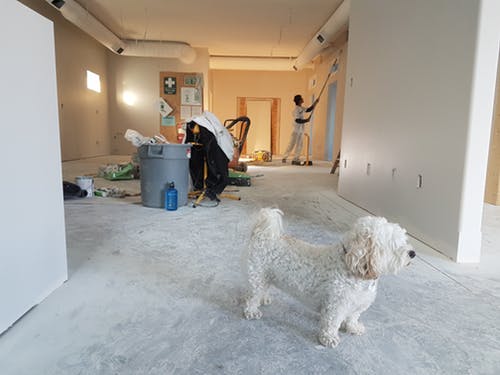If you’re noticing unsightly spots on your kitchen ceiling or bathroom surfaces, there’s a good chance that it’s mold that you’re seeing. Mold can be a major problem. Not only is it unattractive to look at, making your home look dirty, it also smells unpleasant and it can grow out of control. If you don’t deal with mold quickly, you could find that it spreads around your home and if left unchecked could cause structural damage to your property. Even worse, mold can cause medical problems. Some people suffer from allergic reactions and respiratory problems because of mold in their homes. Some types of mold can even cause very serious health problems that could see you end up in hospital. It’s therefore very important to know how to get rid of mold if you spot it growing inside your home. Here is some top advice to help you get rid of it.
Where Does Mold Grow?
Mold thrives in warm and damp environments. That means you’re most likely to find it in places where you carry out activities that involve water. Bathrooms, kitchens and laundry rooms are especially prone to mold problems, as are crawl spaces and attics. You may spot mold growing on your walls, floors or ceilings, but sometimes it can be hidden. Mold can grow under your carpet or flooring, behind wallpaper and in your drywall so sometimes you won’t know it’s there unless you look for it. If you smell a musty, unpleasant odor, there’s a chance it could be mold and you should check it out.

Getting Rid Of Mold
If you find a mold infestation in your home, the first step is to assess how bad the damage is. If there’s only a small patch of mold, or a few smaller isolated patches, you can treat the problem yourself. On the other hand, if there are extensive patches of mold or if your property has already been damaged by the growth, it’s important to call in a professional to address the problem.
Cleaning Mold
Small areas of mold growth can be treated by applying one of the commercially available products available on the market today. It’s important to take great care if you’re planning on using one of these products however. They can be very strong and produce harmful fumes which could irritate your eyes and lungs. If you’re going to use one, you need to take the time to read the packaging and find out how to use it safely. You should make sure the space is well-ventilated and that you protect yourself with safety clothing, googles and breathing masks. You can often clean away mold by using a water and bleach solution. This won’t affect your breathing and isn’t as dangerous as using one of these very strong cleaning products.
Preventing Further Mold
Once you’ve cleaned away the mold, it’s important to prevent it from coming back. Often, mold is simply a recurring problem which requires ongoing treatment, so finding a way to eliminate the issue completely is vital. Check for any sources of water ingress. Check for leaking or blocked gutters, leaking faucets, cracks or gaps around windows and doors and any other sources of leaks. Make sure that they are fully addressed before taking any further steps. Next, a dehumidifier is a good addition to your home. You can either get a whole house dehumidifier which is useful for anyone living in an especially humid region. This will remove excess water from the air of your home to prevent against mold and mildew developing. There are also smaller dehumidifiers available for use in single rooms or smaller spaces like attics and crawl spaces. These are equally effective at getting rid of excess moisture in the air so that you won’t have to worry about the mold problem returning.
Follow these top tips and you’ll find that mold will no longer be a problem in your home. Although it’s unsightly and can harm your health, it’s a problem that you can easily get rid of if you know how to tackle it. Good luck getting rid of those spores!

